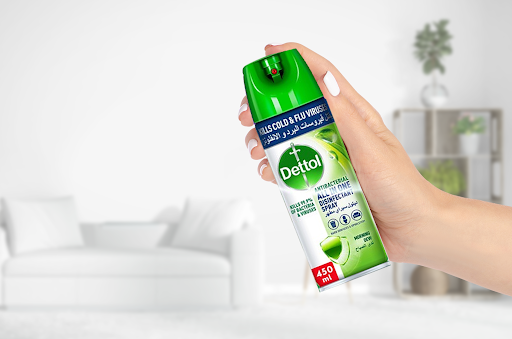Different methods of disinfection and criteria for selection
Harmful bacteria and microorganisms that spread diseases such as typhoid, diarrhea, food poisoning, waterborne illness, skin infections, etc., are present in every environment. Even now, one square inch of your skin contains more than 600,00 bacteria.
While most bacteria are harmless to humans, the highly harmful and deadly ones, such as Bacillus anthracis, Yersinia pestis, Francisella tularensis, and SARS-CoV-2, are called “pathogens.”
Understanding the cleaning frequency around the house, office, school, university, etc., and adopting suitable disinfection methods and disinfectants is essential in helping prevent the spread of diseases.
However, there’s a clear difference between cleaning and disinfecting, and they should not be confused with each other.
Continue reading this article to learn about two types of disinfection methods and know more about the criteria for selecting the right one to disinfect and adequately protect yourself and your loved ones.
Chemical Methods of Disinfection
The chemicals used for a shorter period to destroy microorganisms are called disinfectants. They are usually used on inanimate objects. Antiseptics are chemicals applied to living tissues to kill 99.99% of germs, bacteria, and other harmful microorganisms.
The most common chemical disinfects include:
- Alcohol: Widely used disinfectant and antiseptic. Ideal for disinfecting skin, small instruments, and various medical equipment as an antiseptic liquid. Alcohol-based antibacterial hand sanitizers are common for offering protection from 99.99% of germs.
- Aldehydes: Used as chemical sterilants and not as surface disinfectants. This chemical is ideal for the fumigation of closed areas, such as rooms, living areas, operation theaters, etc.
- Halogens: Chlorine and iodine are frequently used as disinfectants because they possess antimicrobial activity.
- Chlorine: Most commonly available and used disinfectant in the form of Sodium Hypochlorite (NaOCL), otherwise known as household bleach.
- Iodine: Iodine compounds are widely employed antiseptics. Iodine is prepared either as a tincture with alcohol or as an iodophor coupled with a neutral polymer, for example, povidone-iodine.
Criteria for Selecting Your Disinfectant
When selecting a disinfectant for yourself, you should consider the following four criteria to ensure that you use the best disinfectant product for your purpose.
Before we get started, don’t forget to check out our guide about disinfectant roles in tackling coronavirus.
1. Effectiveness
Depending on your industry and environment, you will have varying disinfectant needs and requirements. Remember that pathogens can have multiple strains; disinfectants are certified for some specific strains.
Always go for the disinfectant approved by a reliable Environment Protection Agency, which guarantees the 99.99% elimination of most microbes and pathogens.
2. Kill Time
How quickly does a disinfectant product kill a pathogen? How long does the product remain visibly wet on the surface? Remember, most disinfectant formulas require a specific amount of time and must be on a wet surface the entire time to effectively eliminate pathogens.
Thirty seconds to five minutes is the usual kill time, but if the disinfectant product requires longer, be sure it will remain wet for that long.
3. Safety
Some disinfectant products are toxic, some stain, and others are either corrosive or leave an unpleasant odor. So is your disinfectant product safe to use for people and surfaces?
While handling these products, you must read the toxicity and flammability ratings and wear personal protective equipment (PPE).
When it comes to safety, children require the most protection. So here’s how to ensure the safe cleaning and disinfecting of your baby’s everyday items during the Covid-19 pandemic.
4. Ease-of-use
You must ensure your selected disinfectant product can be easily applied to surfaces. Disinfectant surface spray and antiseptic liquid trigger spray are just one-step products that make them top-choice for easy, quick, effective disinfectants that eliminates bacteria, viruses, and fungi.
